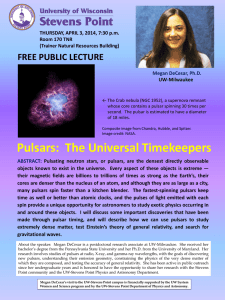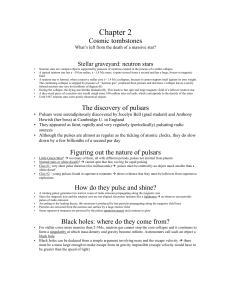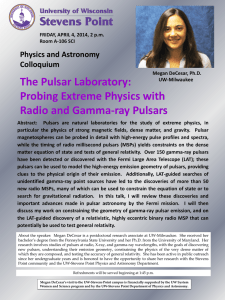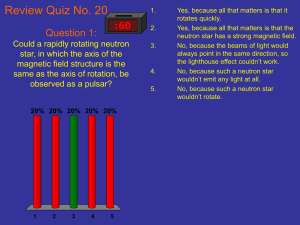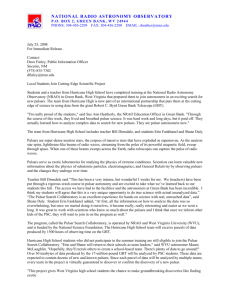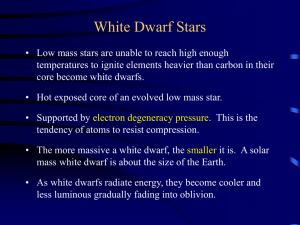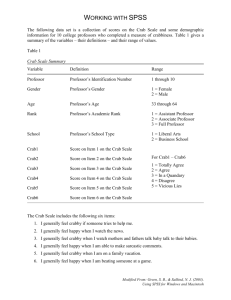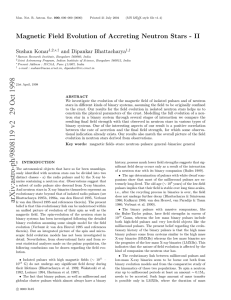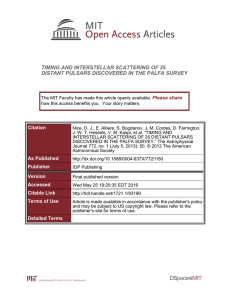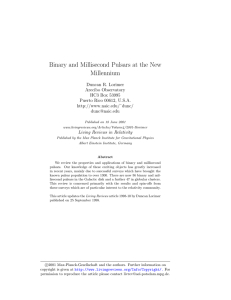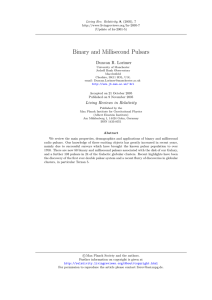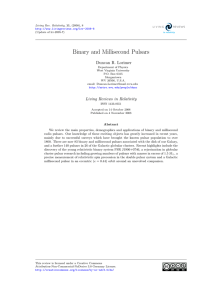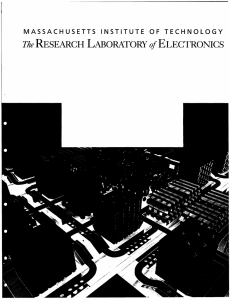Neutron Stars.
advertisement
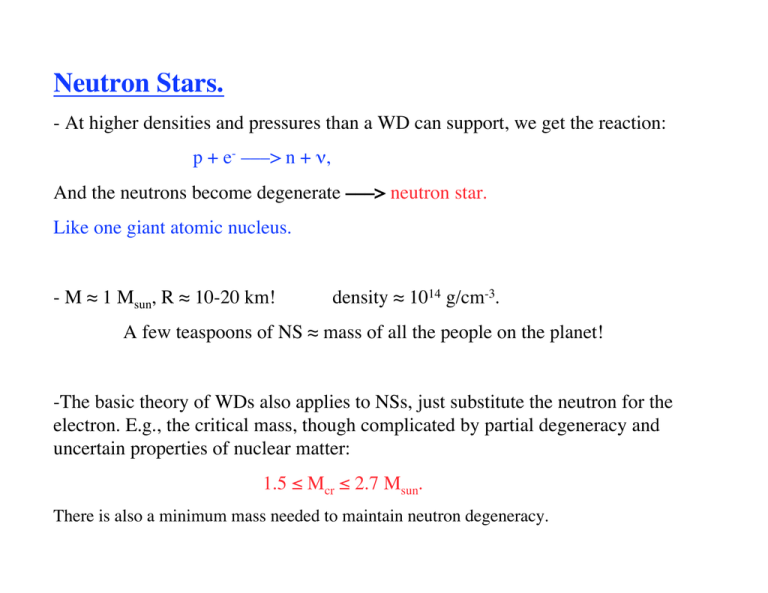
Neutron Stars. - At higher densities and pressures than a WD can support, we get the reaction: p + e- –––> n + ν, And the neutrons become degenerate –––> neutron star. Like one giant atomic nucleus. - M ≈ 1 Msun, R ≈ 10-20 km! density ≈ 1014 g/cm-3. A few teaspoons of NS ≈ mass of all the people on the planet! -The basic theory of WDs also applies to NSs, just substitute the neutron for the electron. E.g., the critical mass, though complicated by partial degeneracy and uncertain properties of nuclear matter: 1.5 ≤ Mcr ≤ 2.7 Msun. There is also a minimum mass needed to maintain neutron degeneracy. Observations of Neutron Stars The existence of NSs and the formation in SN was postulated in the 1930s by F. Zwicky. But so faint! How to observe them? • 1967 Jocelyn Bell…. - Observed a radio source that “beeped” every 1.33733 sec. - Terrestrial signal? Aliens? No, pulsars! • 1968 Tommy Gold; Hewish and Ryle… - pulsars as rapidly rotating NSs. - prediction: should be slowing down. - confirmed by observation. 1974 Nobel prize in physics awarded to Hewish and Ryle. Pulsars Discovery paper: Hewish et al. (1968). Basic properties 1. Periodic radio pulses with 1.6 ms ≤ P ≤ 4.3 s. E. g., PSR 1937 + 214 1.558 ms Crab 0.0331 s PSR 1845-19 4.308 s 2. Slow period increase, except for glitches. dP/dt ≈ 1015 s/s –––> T = P/(dP/dt) ≈ 107 yr. 3. Thus, pulsars are very accurate clocks! Composite Crab Credit: NASA - X-ray: CXC, J.Hester (ASU) et al.; Optical: ESA, J.Hester and A.Loll (ASU); Infrared: JPL-Caltech, R.Gehrz (U. Minn) The Crab Nebula is cataloged as M1, the first object on Charles Messier's famous list of things which are not comets. In fact, the Crab is now known to be a supernova remnant, expanding debris from the death explosion of a massive star. This intriguing false-color image combines data from space-based observatories, Chandra, Hubble, and Spitzer, to explore the debris cloud in x-rays (blue-purple), optical (green), and infrared (red) light. One of the most exotic objects known to modern astronomers, the Crab Pulsar, a neutron star spinning 30 times a second, is the bright spot near picture center. Like a cosmic dynamo, this collapsed remnant of the stellar core powers the Crab's emission across the electromagnetic spectrum. Spanning about 12 light-years, the Crab Nebula is 6,500 light-years away in Taurus. Pulsar drift 4. On timescales of < 1 ms pulse shape is very complex. 5. Pulse intensity is a steep function of ν, typically, I ∝ ν-1.5, and Amp I(400 MHz) ≈ 10-24 ergs/(s cm2 Hz). 1 ms t ––> 6. Pulsars have the same distribution on the sky as supernova remnants. Actual association observed in the Crab and Tycho’s SNR. 7. Pulsars distances can be determined by the dispersion measure - Δt arrival DM ~ , Δν L DM = ∫ ne dl ≈ ne L. 0 Why do we believe that pulsars are neutron stars? 1. Light travels about 500 km in 1.5 ms (r = ct), thus the coherent emitting region is smaller than a white dwarf. This implies a very compact emitting region, e.g., a black hole or neutron star. 2. However, it’s hard to conceive of a black hole accretion disk maintaining regularity over 1013 beats! 3. Moreover, rotating NS models can account for all basic pulsar properties. The Oblique Rotator Model -The rotating magnetic dipole radiates at the rotation frequency - It spins down slowly as energy is radiated away. - The high magnetic field, ~ 1012 G is consistent with a collapsed solar field, B ≈ 100 G. - Radiation is believed to be emitted in a narrow beam (search light) over a broad frequency range. Exact mechanism is not understood. Reprise: NS & BH masses.
